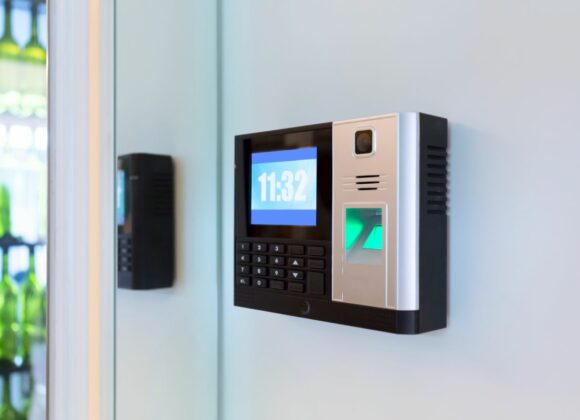Access Control Systems: Things to Know
Access control systems are security solutions used to regulate who can enter or access specific areas, resources, or information within a physical location or digital environment. These systems are commonly used in office buildings, data centers, hospitals, and other facilities requiring restricted access. D & S Security provides access control systems in Los Angeles, Glendale, Pasadena, Anaheim, Burbank, Torrance and surrounding areas.

keypad for access control
Types of Access Control Systems:
Physical Access Control – Restricts entry to buildings, rooms, or secured zones using devices such as key cards, biometric scanners (fingerprint, facial recognition), PIN codes, or mobile credentials.
Logical Access Control – Governs access to digital systems, networks, or data using passwords, two-factor authentication (2FA), user roles, and permissions.
Key Components:
Access Cards or Credentials – Identifiers used by users to gain access.
Readers/Scanners – Devices that validate credentials.
Control Panel – The system’s “brain” that verifies access rights.
Software – Used to manage users, permissions, and logs.
Locks/Barriers – Mechanisms that physically restrict access.
Access Control Models:
Discretionary Access Control (DAC) – The owner decides who gets access.
Mandatory Access Control (MAC) – Access is determined by security labels and policies.
Role-Based Access Control (RBAC) – Access is based on a user’s role within an organization.
Benefits:
Enhanced security and accountability.
Restriction of unauthorized access.
Audit trails for incident tracking.
Customizable user permissions.
Considerations:
Scalability – Can the system grow with your organization?
Integration – Does it work with existing security tools?
Compliance – Does it meet legal or industry regulations?
User Experience – Is it easy for staff to use?
Access control systems are essential for safeguarding assets, ensuring data privacy, and managing personnel movement within any secure environment. Properly implemented, they form a critical layer in an organization’s overall security infrastructure.
Please reach out with any questions you might have, and we will be happy to help.
